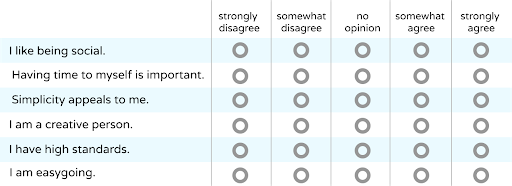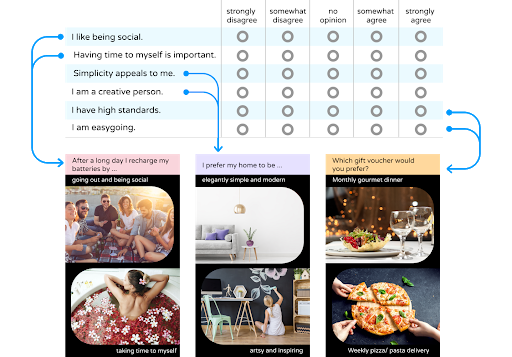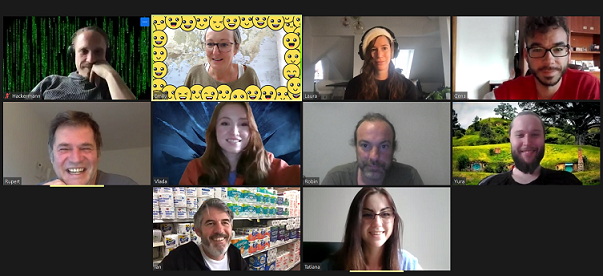Pop Quiz: Why WUNDER uses Quizzes for Playful Engagement
Quizzes are a powerful yet playful tool to get to know your customers better.
At WUNDER, we invite users to answer questions and partake in quizzes, so that they can share their values, interests and lifestyle choices with us. Through their answers we get a deeper insight into who they are as humans – beyond sociodemographics. If you are wondering why this is important, please check out one of our previous posts, “Are Prince Charles and Ozzy Osbourne Twins?”. In it, we discuss the limitations of judging a person based on socio demographic data alone.
 Consumer insights gathered during these quizzes provide companies with the chance to deliver value in a more meaningful way; a way that’s tailored to their target customers’ personalities:
Consumer insights gathered during these quizzes provide companies with the chance to deliver value in a more meaningful way; a way that’s tailored to their target customers’ personalities:
Patagonia knows how to target environmentally conscious adventurers.
Red Bull target lovers of extreme sports, adrenaline-fuelled activities and the life that goes with it.
Harley Davidson understands the psyche of riders, their image and attitude.
WUNDER helps companies find out who THEIR customers are.
Playful Engagement – The WUNDER Way
At WUNDER, we believe in making things fun. This corresponds perfectly to the playful and whimsical nature of quizzes. You may remember flipping through glossy magazines in your teens, completing quizzes like:
-
-
-
-
-
-
-
-
-
-
-
-
-
- What’s your seasonal color palette?
- Which Disney character are you?
- How well do you know your best friend?
-
-
-
-
-
-
-
-
-
-
-
-
There is something so captivating, engaging and addictive about these quizzes. They were light and quirky, never overly taxing, but at the end you discovered something about yourself. Or, at the very least, you found out how close your results captured your personality.
Our objective at WUNDER is to present playful quizzes that mirror the lighthearted quizzes of our youth, but are based on an elaborate psychological system and managed through cognitive AI.

Quizzes That Have Inspired the WUNDER Design
Our quiz designs are inspired by a broad range of quizzes that our team has stumbled upon over the years. Below is just a small collection of some of the best quizzes we’ve been influenced by.
Hunch – A decision-helping service that asks you to answer questions to find out if you should do something. Think Magic 8-Ball meets scientific consideration.
16 Personalities – Get deeper insight into your personality type. We are inspired by the care and attention they’ve put into the personality descriptions.
Open-Source Psychometrics Project – A rich collection of various personality tests.
Heywise – Fun and light quizzes to find out what fictional character you are. So engaging, you might find yourself stuck on their page for hours.

Meaningful Vs. Meaningless Questions
A famous selection of quizzes are the Proust questionnaires from the early 20th century. In his quizzes, Proust used open questions such as:
What is your idea of perfect happiness?
What is your greatest fear?
Which living person do you most admire?
These questions are a great inspiration because they get straight to the point. The insight you gather from a Proust question tells a lot about a person’s attitudes and values sets. As a side note, Proust questions can be a great tool to move away from small talk and spice up conversations. However, in order to get an idea of how to measure answers, let’s examine a different system, the Likert Scale.

In the above example, you have to decide to what extent a certain value corresponds with you. It is a useful tool. However there is one weakness to this approach: people get away with being lazy and saying “yes” to everything.
In the example provided, the quiz-taker is given the line ‘I like being social’. The person might think to themselves I like being social some of the time so they pick “somewhat agree”. In the next question the person is presented with the line ‘Having time to myself is important’. Again, they think that time alone is important on occasion, so they pick ‘somewhat agree’. There is every possibility that they could select ‘somewhat agree’ to all these “somewhat agreeable” statements.
We do not get any valuable insight from these specific answers. Why? Because being “extremely social” and enjoying “time to yourself” are verging on contradictory statements. Take a closer look at the next 4 statements of the Likert Scale. Can you find other opposing statements?
So our question is, can we turn this obstacle into an advantage? This is where the Semantic Differential Scale comes into play.
The Semantic Differential Scale
![]() The Semantic Differential Scale encourages people to decide between two opposing attributes. This is in contrast to the Likert Scale which lets you only evaluate one attribute or idea at a time. For example you might have the word “weak” at one end of the scale and “strong” at the other with 7 points in between. If you select the point closest to word “weak”, it suggests that you are strongly agreeing that something is weak. The opposite is also true.
The Semantic Differential Scale encourages people to decide between two opposing attributes. This is in contrast to the Likert Scale which lets you only evaluate one attribute or idea at a time. For example you might have the word “weak” at one end of the scale and “strong” at the other with 7 points in between. If you select the point closest to word “weak”, it suggests that you are strongly agreeing that something is weak. The opposite is also true.
The purpose of the Semantic Differential Scale is to understand the connotative meaning of words and statements. The connotative meaning refers to a meaning suggested or implied by the use of a particular word, beyond its literal meaning. For example, the connotative meaning of “home” could be a place of warmth and love. The connotative meaning of “blue” could be sadness. The Semantic Differential Scale tries to find the connotative meaning of words and what value or emotion the respondent is trying to convey.
Today, the semantic differential is a standard scaling technique in the social and behavioural sciences. It is most prominent in psychology, but also used in linguistics, sociology, marketing research, and other empirically oriented disciplines. Learn more about the science and psychology behind semantic differential here.
WUNDER’S Solution
The challenging part about the semantic differential technique is finding words that are truly opposites. WUNDER created a 3-dimensional map of human values in order to find opposing values. This map is part of the Mindgraph (WUNDER’s trademarked mind-matching algorithm) and therefore one of the fundamental components of the WUNDER solution.

Here is an example of how WUNDER transformed six (Likert) questions into an AI- powered quiz. Questions in the Likert style are being paired as opposites (semantic differential) using the Mindgraph technology. As a final step they are enhanced with a playful design.
The Results
WUNDER uses Cognitive AI to match customers with the products they are most likely to love. Once the Mindgraph understands the customer’s basic values, interests and lifestyle choices, it will match them with products that best reflect the customers’ attributes. WUNDER’S 3rd wave AI goes way beyond recommendation software.
WUNDER Playtime
WUNDER Playtime is a series of ready-to-use cognitive AI engagement apps that use personalised quizzes to match consumers with products they are more likely to buy. Playtime is designed to allow eCommerce brands to convert consumer intent at the earliest stage of the customer journey.
To learn more about WUNDER Playtime, why not check out our quick introduction video below?



